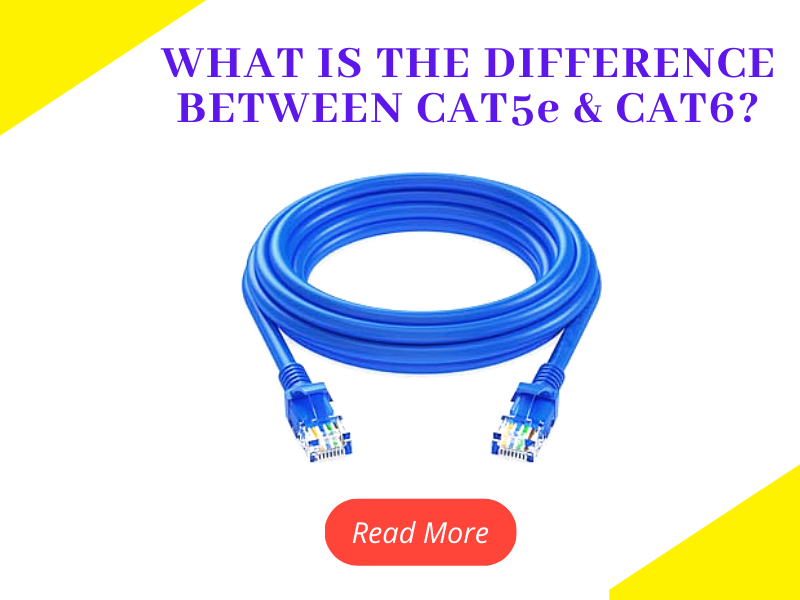
What is the Difference between CAT5e and CAT6?
Choosing the appropriate Ethernet cable for your home or business network is important. Ethernet cables are continuously upgrading according to the demand therefore picking the right one can be tricky. Wireless networks are far more prone to interference than the wired ones.
Thus the two of the most popular Ethernet cables are CAT5e and CAT6, but which one is better? In this blog, we will break down the differences between CAT5e and CAT6, so that you can make an informed decision and find the best solution for your application.
What is CAT5e Cable?
CAT5e also referred to as Category 5e or Category 5 Enhanced is a network cable. CAT5e offers significantly improved performance over the old CAT5 standards including up to 10 times faster speed and significantly greater ability to traverse distances without being impacted by the crosstalk. CAT5e cables are typically 24 gauge twisted pair wires which can support Gigabit networks at segment distances up to 100m.
What is CAT6 Cable?
CAT6 derived from Category 6 introduced only after a few years of CAT5e. CAT6 is a regulated twisted pair cable for Ethernet that is backward compatible with CAT5/5e and CAT3 cable standards.
CAT6 cables support Gigabit Ethernet segments up to 100m and it also allows for use in 10-Gigabit networks over a limited distance. Earlier CAT5e typically ran to the workstations while CAT6 was used at the backbone infrastructure from router to switches.
Difference Between CAT5e and CAT6
CAT5e vs CAT6 Bandwidth
Both CAT5e and CAT6 can handle speeds up to 1000 Mbps or Gigabit per second. It is more than sufficient for the speed of by far the most internet connections. However, the main difference between CAT5e and CAT6 cable lies within the bandwidths. CAT6 cables are designed for operating frequencies up to 250 MHz as compared to 100 Mhz for CAT5e. It means that a CAT6 cable can process more data at the same time.
CAT5e vs CAT6 Speed
CAT6 cables can perform up to 250 Mhz which is more than twice of CAT5e cables (100 Mhz). It offers to speed up to 10GBASE-T or 10-Gigabit Ethernet while CAT5e cables can support up to 1GBASE-T or 1-Gigabit Ethernet.
CAT5e vs CAT6 Maximum Length
Both CAT5e and CAT6 offer a range of up to 100 m per network segment. The maximum achievable speeds will never meet beyond this length. This can result in a slow or failing connection and even no connection at all. If it is required to cover distances longer than 100 m the signal can be amplified with repeaters or switches.
When used for the 10GBASE-T, the maximum length of a cable CAT6 cable reduces to 55m. After this distance, the rate drops to 1GBASE-T. To be able to run 10GBASE-T over a full 100 m then it is advised to use CAT6A also known as Augmented Category 6 cable.
CAT5e vs CAT6 Cost
Ethernet cables have multiple characteristic influences on the cost factors. Its main elements have length, quality, copper content, and manufacturer. Therefore in general CAT6 cables are priced 10-20% above CAT5e cables.
Conclusion
Other than the mentioned above you find various other considerations while choosing the right cable. With a large number of users, the frequency of the cable becomes an important factor. Is the cable for indoor or outdoor use? If the cable has to be rigid or flexible? Possible sources of interference? And so on. In the end, the choice comes down to your application.
However, the most important consideration regardless of your choice for CAT5e or CAT6 is that you always opt for a 100% copper quality cable. An inferior cabling system can cause up to 70 percent of network downtime even though it usually represents only 5 percent of initial network investment. Always opt for a supplier that provides a lifetime guarantee on independently ETL-Verified CAT5e and CAT6 cables.

